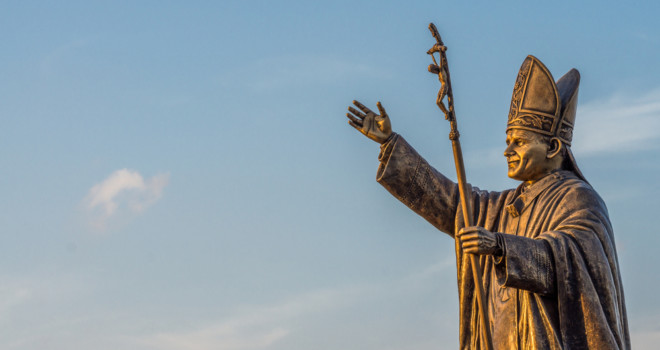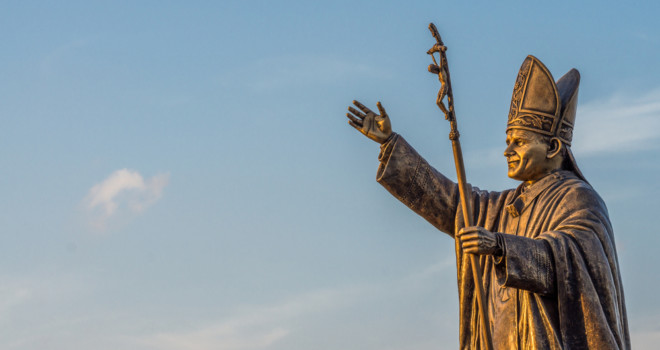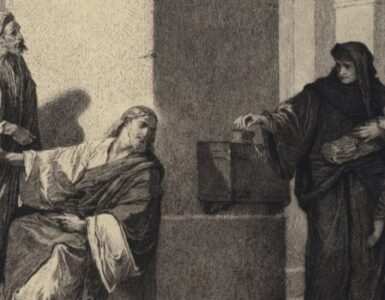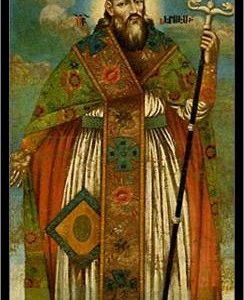As we celebrate Pope St. John Paul II’s birthday on May 18, the lessons from his papal magisterium continue to ripen with time. Perhaps most pressing these days are those lessons from his tireless defense for life. It has been over 25 years since the release of John Paul’s great encyclical on life, Evangelium Vitae (The Gospel of Life), but it can still be drawn upon as we continue battling the culture of death. Promulgated in March 1995, it marked the second of three John Paul II “culture encyclicals” from the 1990s, following Veritatis Splendor (1993) on moral theology and preceding Fides et Radio (1998) on faith and reason.
While the chief focus of the Gospel of Life is devoted to the integrity of the unborn, the encyclical also confronts the issue of euthanasia, and its growing prevalence as a legitimate end-of-life option in the public consciousness. Here the encyclical reiterates the blunt statement in the Catechism that euthanasia is “morally unacceptable” (par. 2277). Still further, the Catechism goes on: “Intentional euthanasia… is murder” (par. 2324).
In this encyclical, John Paul II foresaw the coming legalization of certain “death with dignity” laws that would spike in popularity throughout the United States in the years after his death. Currently, nine states and the District of Columbia recognize physician-assisted suicide as legal. That John Paul II tied euthanasia into an encyclical largely known for its arguments against abortion shows the continuity in Church teaching about the sanctity of life from conception to natural death.
And yet, “it is we who must choose between evil and good,” John Paul II said in Los Angeles in 1987. California is among those states that legalized the “end-of-life option” law, a euphemism for physician-assisted suicide. Responding to choosing between evil and good, California’s bishops in collaboration with Catholic health care professionals developed an initiative to better equip the faithful with knowledge and resources needed to combat this “culture of death,” a phrase coined by John Paul II in the Gospel of Life, particularly in light of palliative and hospice care.
Known as the Whole Person Care Initiative, this intentional, Catholic-themed effort counters secular culture’s definition of “death with dignity” (another euphemism for physician-assisted suicide) by emphasizing the Catholic tradition of “praying for a happy death.” In addition to recommending the reception of the Sacrament of the Sick and other spiritual graces offered when facing serious illness, the initiative stresses preparedness for such a time, particularly when patients cannot speak for themselves.
In order for Whole Person Care to be effective, an entire change in perspective is needed: in how we see the world, and how we see death.
To help broaden public knowledge of this initiative, I wrote, produced, and co-hosted a miniseries for EWTN television, Whole Person Care: Living and Dying in the State of Grace. In five episodes, the goal of the series was to unpack the purpose of the initiative, help audiences better understand the meaning of palliative care, hear witness testimony on what it means to die a happy death, examine true “death with dignity” in light of the Works of Mercy, and hear how the initiative seeks to grow in dioceses across the United States.
Dr. Vincent Nguyen, D.O., palliative care program director at Hoag Hospital and a leading proponent of Catholic California’s Whole Person Care Initiative, is the series main anchor. We also dwell in theological meditations on the meaning of suffering and death. Guests include Fr. Scott Borgman of the Diocese of Orange, Patty Mouton of Alzheimer’s Association of Orange County, Dr. Frances Broghammer, MD of UC Irvine, Sr. Theres Tran, LHC, Lori Dangberg of the Alliance for Catholic Health Care, and Lindy Wynne of mamasinspirit.com.
Dr. Nguyen continually cites physician-assisted suicide’s failure in providing comfort to families who experience it. Citing the Institute of Medicine’s “Dying in America” report, that journal concluded the needs of those facing death were largely unmet. Whole Person Care not only seeks to serve as an alternative to physician-assisted suicide, but also strives to meet the emotional, psychological, spiritual, and of course, physicial needs of those facing serious illness.
We are an aging population, and the booming healthcare business needs to be anchored in sound ethical and moral practice. In such a situation, the timeless teaching of the Catholic Church stands as an everlasting pillar of truth in the face of shifting cultural ideologies and varying definitions of what it means “to die.”
A prime example of this is in the public death of Pope St. John Paul II. For years, the Polish pope, slowed by Parkinson’s, showed the world how to age gracefully, even when it was uncomfortable to see. Ultimately, as it became clear the end was approaching, he did not shy away from one of the most public deaths in our lifetime.
John Paul II’s death on the night of April 2, 2005, the vigil of Divine Mercy Sunday, is forever etched in the consciousness of those who followed the news reports leading up to his pronouncement. When it finally happened, the world—most especially the young—both mourned and gave thanks for the life and witness of the one who tirelessly championed the Gospel of Life, even when he couldn’t move, eat, or speak. That is true death with dignity.
Whole Person Care: Living and Dying in the State of Grace debuts on EWTN Global Catholic Network June 14-18, 2021 at 5:30p.m. Eastern. The series can also be viewed at the same time on ewtn.com. It will also be available for streaming at ondemand.ewtn.com.
✠












